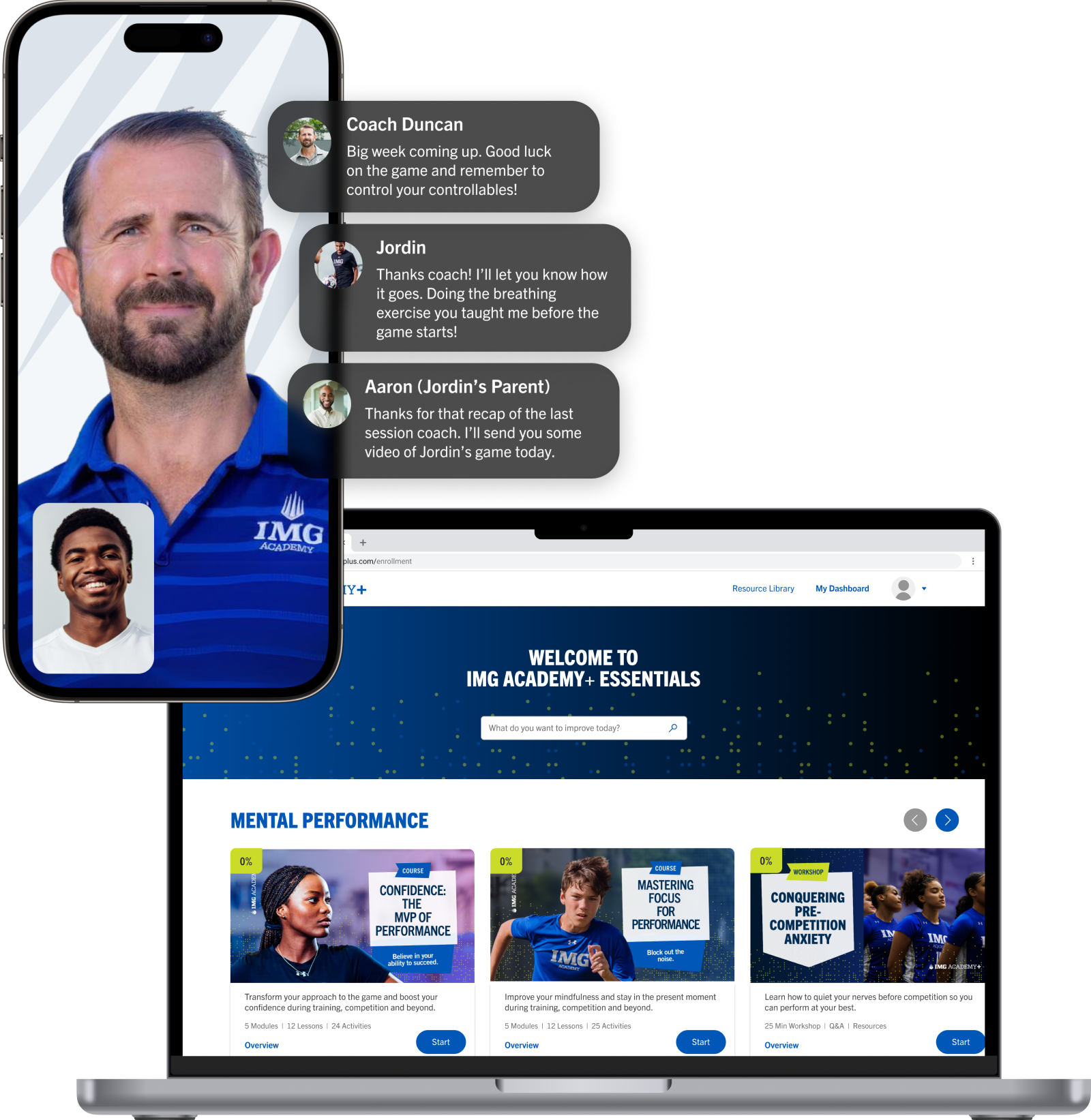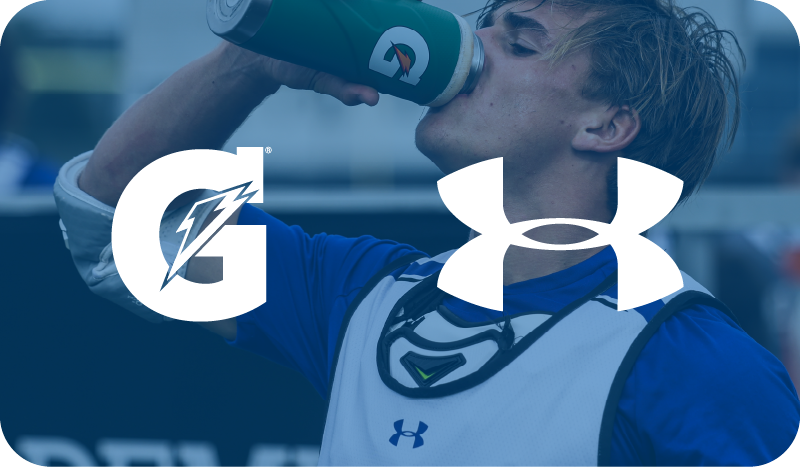Halftime is more than just a break from the game. How you approach halftime could determine how you perform in the second half. For example, practicing positive self-talk can boost your confidence going into the second half and help improve your performance. Keep reading for more tips on how to refocus and refuel during halftime.
THE IMPORTANCE OF HALFTIME
While halftime looks different for every sport, the purpose remains the same; to give teams a chance to rest and regroup. During halftime, coaches lead their athletes in an assessment of what's working and what areas they can improve, regardless of the score. They make necessary adjustments, such as formation changes, style of play changes, and player substitution.
Halftime also gives athletes a chance to refuel, hydrate and tend to any aches or injuries they experienced in the first half.
It gives you an opportunity to enter the second half with a renewed sense of urgency and adjusted game strategy to find success against an opponent.
BUILD YOUR CONFIDENCE WITH POSITIVE SELF-TALK
Whether you're playing your best or worst game, building yourself up with positive self-talk is important for maintaining confidence in yourself and your team. When you practice positive self-talk, you can increase your motivation, resilience and focus, while decreasing performance anxiety. Plus, studies have found that positive self-talk is linked to greater enjoyment, self-confidence, and higher perceived self-competence.
Here are some examples of positive self-talk:
- "I've made this shot before, and it's doable."
- "I'm in great shape, finish strong."
- "I feel confident and relaxed no matter what."
- "I am focused and ready to compete."
- "I feel happy and enjoy the game."
- "I'm feeling strong."
MINDFULNESS EXERCISES EVERY ATHLETE SHOULD DO
During halftime, athlete's' minds are often racing as they reflect on the first half and begin strategizing for the second half. This can be overwhelming, which is why it's beneficial for athletes to add mindfulness exercises into their halftime routine. Below are two helpful exercises that athletes can use to calm their mind.
Deep breathing exercises
Used to help control stress, breathwork calls on you to focus solely on your breath as you take deep breaths in and out. In high-stress situations, deep breathing allows you to calm your nerves and maintain a clear head.
1-minute meditations
After your coach has finished talking with the team, athletes can engage in a 1-minute meditation. Find a comfortable position, close your eyes, set a timer, and begin to count your breaths. As you count your breaths, do a body scan, checking in on how you are physically feeling. Are you feeling strong? Are you hydrated? Allowing yourself to deeply connect with your mind and body to regain focus and energy levels.
KEEP YOUR BODY GAME-TIME READY WITH THESE HALFTIME EXERCISES
Halftime might only last 15 minutes, but that's plenty of time for an athlete's body to get cold. Here are seven dynamic exercises athletes can do during halftime while still being dialed in on the huddle talk.
- Knee hugs
- Hip rotation
- Lateral lunges
- Jumping jacks
- Toe touches
- Buttkicks
- Jog in place
WHAT TO EAT DURING HALFTIME
Have you ever felt fatigued or found it more challenging to focus during towards the end of a game? Games are often won or lost in the second half. Halftime provides an incredible opportunity for you to refuel and rehydrate so you can either make a second half comeback or keep the lead through the end. Give your muscles and your mind an advantage over the competition by developing a half-time fueling and hydration routine.
During activity we primarily use carbohydrates as our main fuel source. We also lose fluid and electrolytes (mostly salt) through sweat. So the goal for halftime is to replenish these lost carbohydrates and electrolytes.
We talked to IMG Academy's Head of Nutrition, Jackie Barcal, about the best halftime snacks for athletes. Barcal said that, ideally, halftime snacks include a combination of simple carbohydrates, salt, and fluid. Simple carbohydrates get digested and to your muscles quickly which can help avoid stomach upset and replenish glycogen losses (stored carbohydrates). Examples of simple carbohydrates include:
- Fruit or fruit pouches
- Granola bars
- Pretzels
- Graham crackers
- Sports drinks
Snacks that are not ideal include foods high in fat, fiber, and protein. Fat, fiber, and protein all get digested slower than simple carbohydrates so will delay how quickly your body is able to utilize that fuel for energy. Examples include:
- Nuts
- Seeds
- Beef jerky
- Chocolate bars
- Protein shakes
- Fiber bars
While those aren't completely off limits, you do want to be mindful of the amount you consume.
Every athlete's halftime routine could look a little bit different and a lot will depend on the sport, your position, and other individual factors so the most important thing is to practice your halftime fueling and hydration routine so you know what works for you."
IMPROVE YOUR MENTAL PERFORMANCE AND NUTRITION HABITS
At NCSA, we believe in training the whole athletes, which is why we, in partnership with IMG Academy, offer one-on-one training with an IMG Academy+ Mental Performance and/or Nutrition Coach to enhance your sports training and achieve your goals.
Mental Performance Coaching
Mental performance is often what separates champions from the rest.
- Learn tools to increase confidence, focus, and resilience
- Define and meet individualized performance objectives
- Practice your mindset training with interactive drills and activities included with the IMG Academy+ app

Nutrition Coaching
Learn to fuel your body to have the energy you need in crunch time.
- Work with a nutrition coach to create custom fueling guidelines designed for training and competition
- Learn to optimize diet and nutrition to accommodate travel, injury prevention, and beyond
- Receive 24/7 support from your nutrition coach included with the IMG Academy+ app
Looking to build confidence in your student-athlete? Sign up for the IMG Academy+ Confidence on-demand course.
Sign Up










